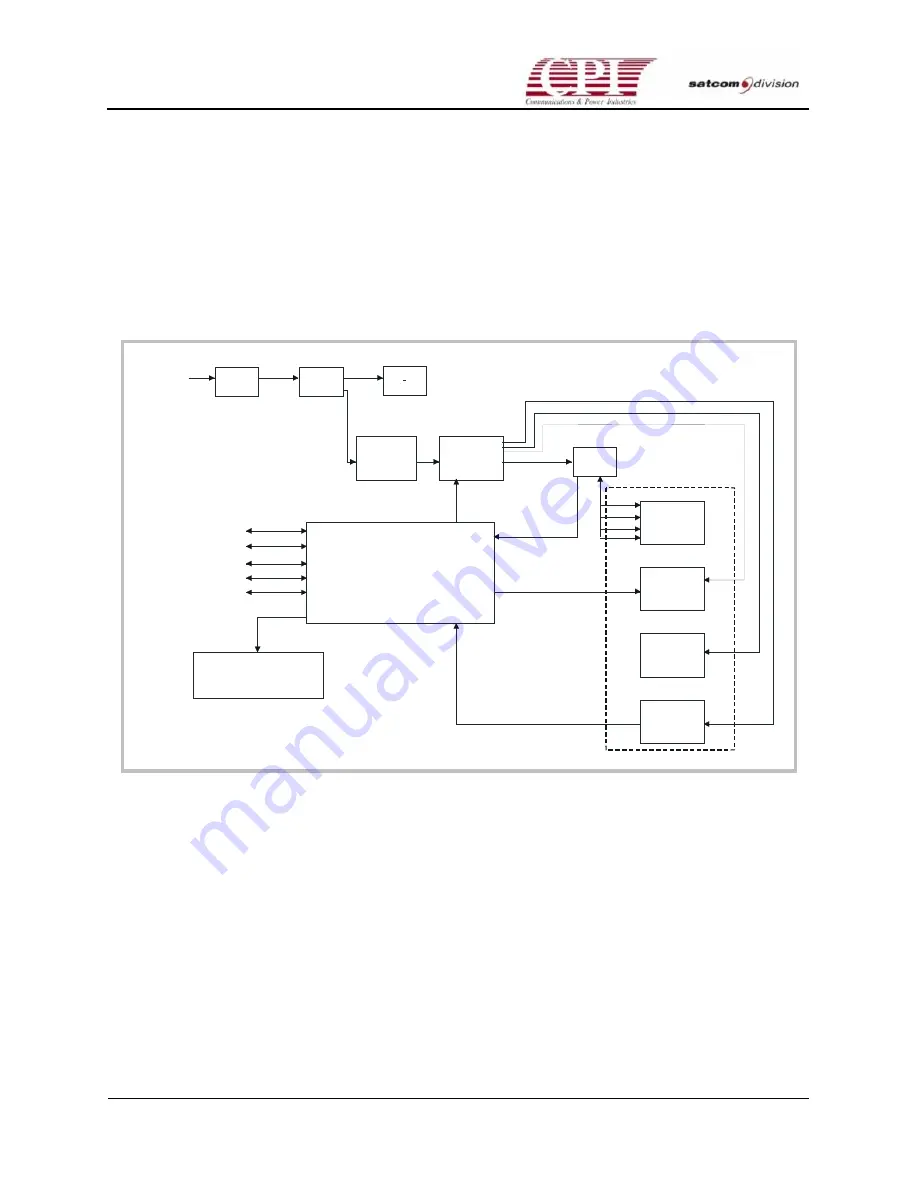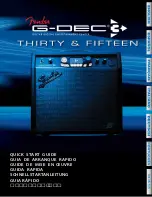
CHPA SERIES
1-6
THIS
DOCUMENT
IS
THE
PROPERTY
OF
COMMUNICATIONS
&
POWER
INDUSTRIES.
REPRODUCTION
OR
RELEASE
WITHOUT
EXPRESS
PERMISSION
IS
STRICTLY
PROHIBITED
D
OC
.01023245
R
EV
.L
The standard RF output interface, provided by the user, to connect the CHPA to the external
waveguide run is a CPR-137F (flange) termination for the C-band, and WR-75F for the Ku-band.
1.4.2 Power
Supply
Subsystem
The power supply portion of the CHPA provides all of the internal voltages necessary to
operate the TWT, RF driver (SSIPA), the forced-air cooling system, and auxiliary circuits for
control, monitoring, and protection of the CHPA. Other than the AC input power, no other
external power supplies or voltages are required for operation. A simplified block diagram of
the power supply is shown in Figure 1-3.
EMI
Filter
AC
Input
Circuit
Breaker
Fans
220-240
VAC
Power Factor
Correction
Module
Power
Processor
375 VDC
Flash RAM Programming
Switching I/F
Serial Remote Control
(For use with CPI Remote Panel)
Computer I/F
User Interlocks
Control
&
Display
Micro-controller
RF Metering
& Faults
Control
&
DC Power
Monitor
Control
HV
Module
Helix
Cathode
Coll. 1
Coll. 2
RF Subsystem
TWT
Linearizer
(optional)
DC
Power
SSIPA
RF Monitor
DC
Power
DC
Power
Figure 1-3. Power Supply Block Diagram
The traveling wave tube derives its operation from four DC power supplies: a low-voltage
filament (heater) supply, a high-voltage helix supply, and two high-voltage collector supplies.
The power supply design utilized in the CHPA is of the SMPC (switch mode power
conditioner) type, which has an excellent reputation for reliability and stability. An added
advantage of the SMPC approach over outdated linear power supplies is its intrinsic high
efficiency and safe operation. By limiting the amount of the instantaneous stored energy in the
power supply, the risk of permanent damage to the CHPA due to abnormal or transient
conditions is avoided. The momentary level of stored energy (measured in joules) is well below
the maximum limit of energy that the tube can safely dissipate during normal operation. The
principal circuit modules are discussed in the following paragraphs.
















































